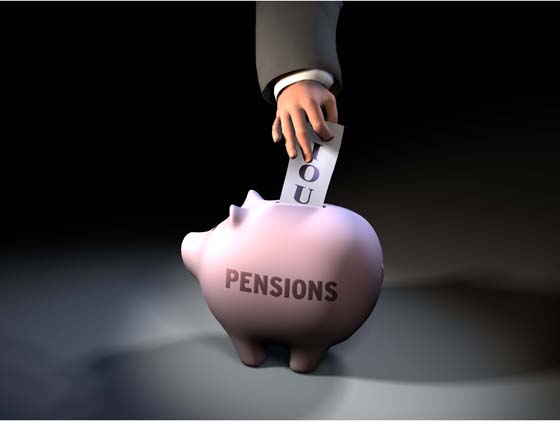On breaking unions, states filing bankruptcy, and public pension underfunding

During the Great Depression, Congress passed an act saying states and municipalities could file for bankruptcy. The law was challenged and part of it was overturned by the Supreme Court in 1936 in Ashton v. Cameron County Water Imp. Dist. Congress then rewrote the law so that municipalities could file bankruptcy. However, the Supreme Court specifically ruled that the federal government did not have the authority to "restrict the States in the control of their fiscal affairs" and that ruling still holds. In other words, it was a clear issue of states' rights. Thus, there is no provision in federal law for states to file bankruptcy. Also, bankruptcy courts are federal, not state. Therefore, there is no way for states to declare bankruptcy.
This is obviously of more than academic interest as many states, including California, are facing severe budget deficits. Without bankruptcy, the only option, should obligations not be able to be met, is to default on bond payments as well as not meet other obligations.
Some Republican lawmakers want to change this. They want states to be able to file bankruptcy, and they also want to force states and municipalities to use stricter private pension fund accounting rules to determine their liabilities. Currently, public pensions are allowed to assume far more generous (and utterly unrealistic) rates of return than private pensions can. House members Devin Nunes, Darrell Issa of California, and Paul Ryan of Wisconsin have introduced a bill to mandate the more conservative rules. If the pensions refuse, they would not be allowed to issue tax-exempt bonds. This would directly impact all three of the major public pensions in California, including CalPERS.
Even liberals will have trouble arguing that public pensions should not have to follow the same accounting rules that private pensions do. However, they are also alarmed that such rules, along with states being able to go bankrupt, are actually a conspiracy to go after public unions and pension funds. Let me assuage their fears. It's not a conspiracy at all but rather in plain view for all to see.
Here's how it would work. California files bankruptcy. A federal judge oversees what comes next. Normally, bondholders go to the head of the line. A crucial part of a new bankruptcy law is that it must have a 'cram-down" provision that forces bondholders to take pennies on the dollar and not allow them to protest and drag the process out for years (Without such a provision, such a new law would simply be a gift to investment banks and hedge funds, allowing them to grab most if not all of the money.) Here's the crucial part. The trustee for the bankruptcy would also have the power to break or re-negotiate public pension agreements. This is where the coming brass knuckles fight in California will be, with public unions and their pensions fighting an attempt by conservatives to break their power, influence, and to re-do existing pension agreements.
Many liberal blogs and commentators are howling about this. If they want to prevent it, then they need to explain where the money for the state budget and its woefully underfunded public pensions will come from. This is not a made-up crisis. The money really isn't there.



